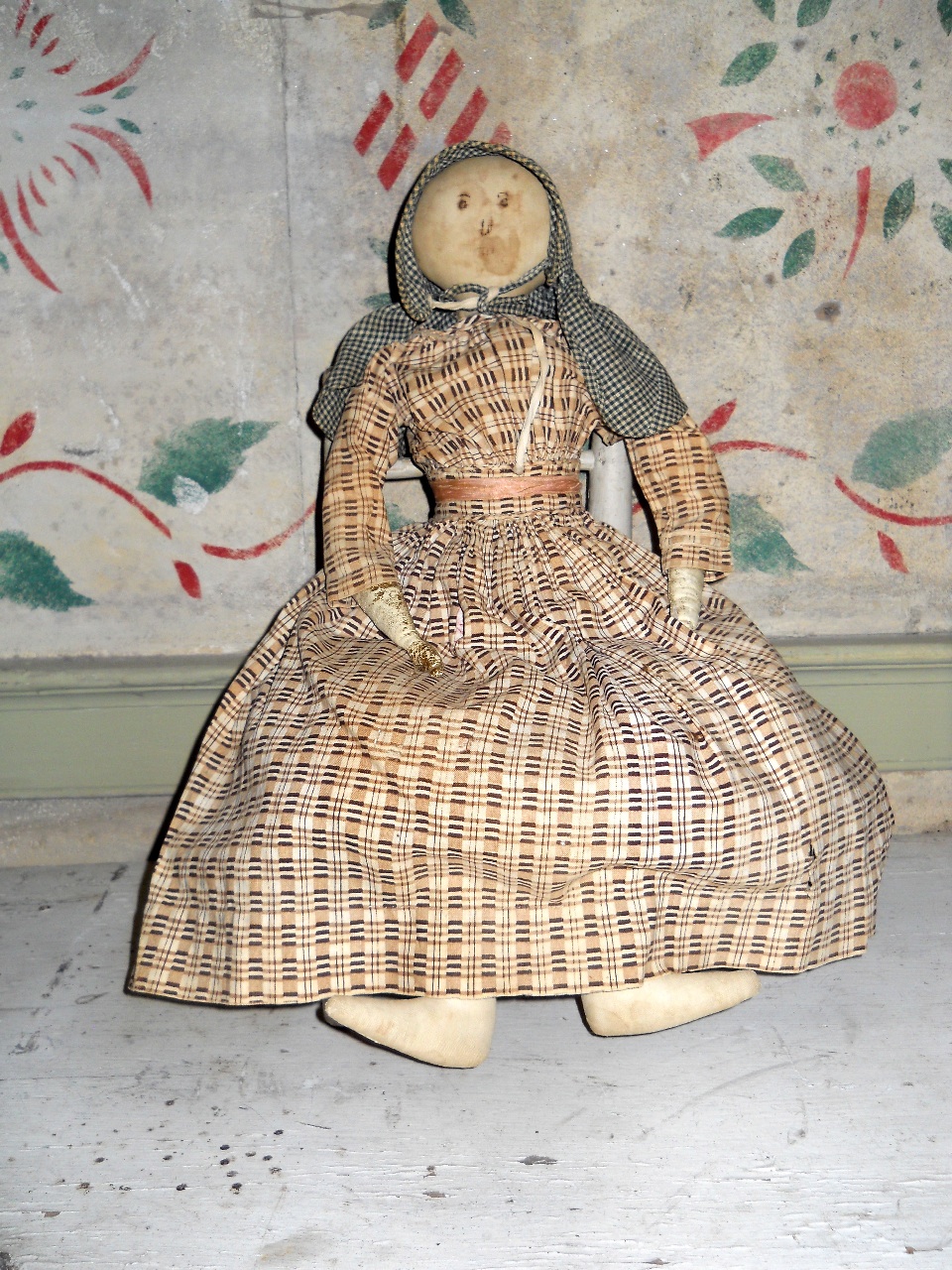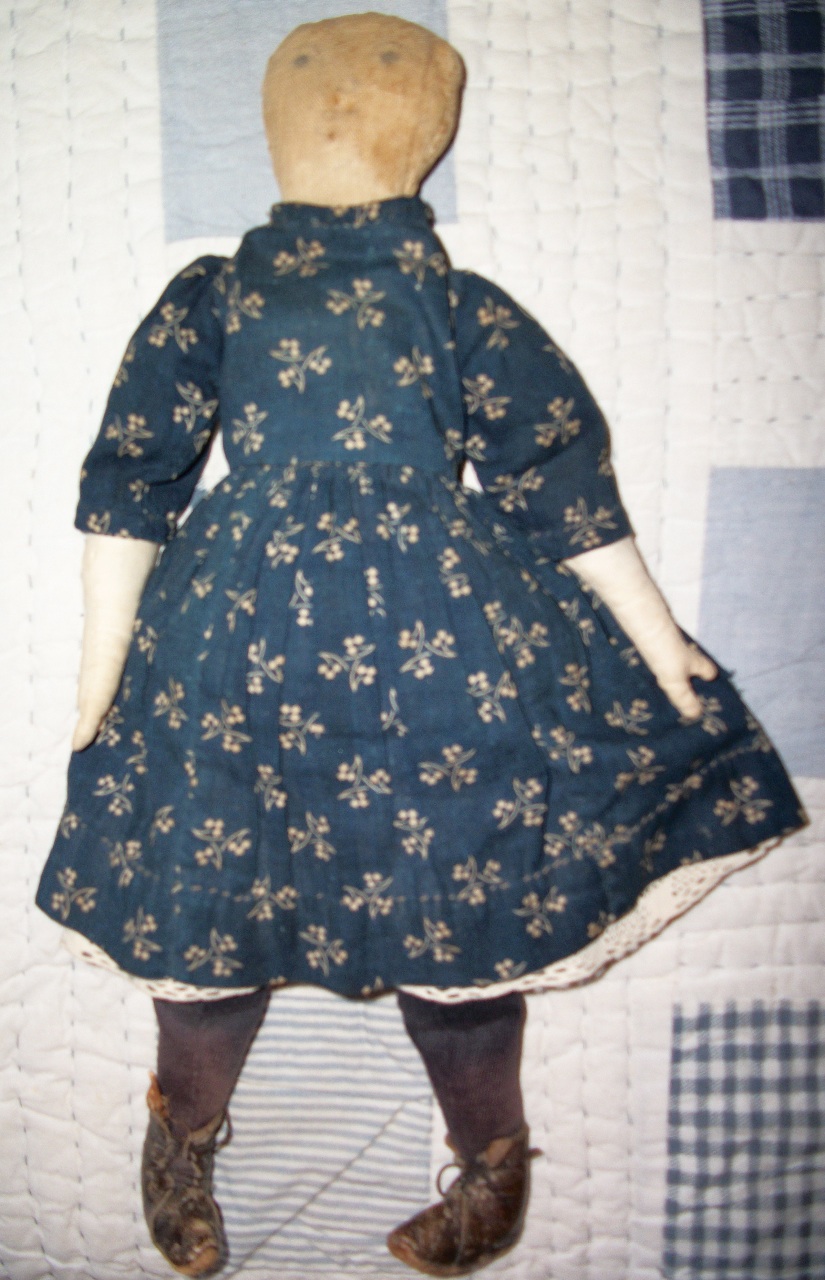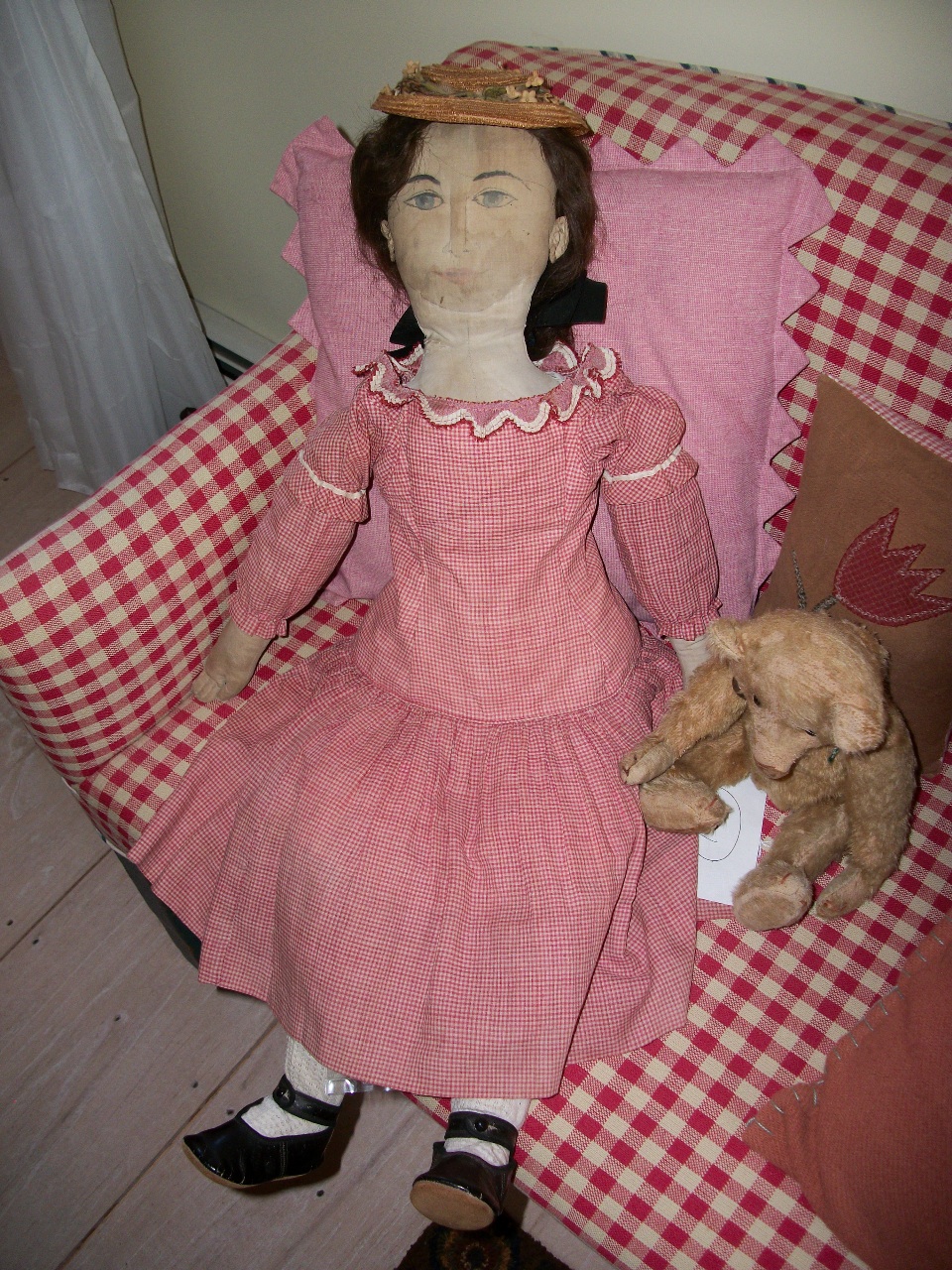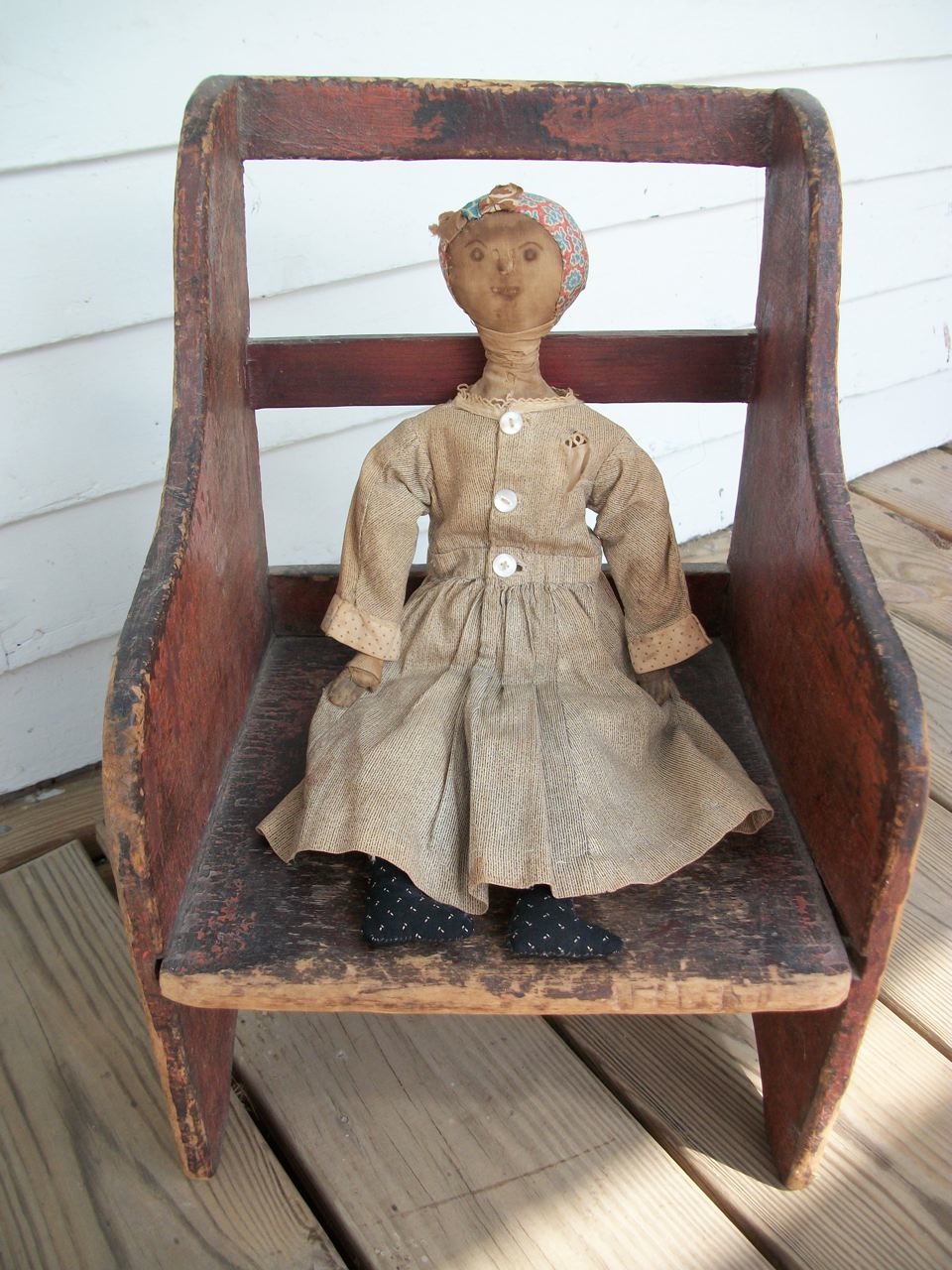April 2011: Why Folk Dolls?| Notes Archive
WHY FOLK DOLLS ? Well, I guess what happened is that at an early stage in my education as a fledgling dealer, I noticed them. Sometimes a thing draws one's full attention, creating a real encounter. I think my first meaningful moment with a rag doll was in the wonderful little cape on Peaceable Street in South Salem, NY, where Gretchen and Jack Sharp lived. Gretchen kept a beguiling shop in a large red barn behind the house. I was very young, and Gretchen nurtured me, along with Judy Lenett and Patsy Orlofsky. We made up a threesome: Gretchen's girls. |
|
|
We all loved her. She was a gracious and brilliant old-fashioned lady, with a twinkle in her eyes and a powerful personality that took no prisoners. A cigarette in a holder constantly dangled from her lips! Her buying trips were legendary. We all rushed to see the goodies as soon as she landed from a foray to New York State or New England. As we grew in her affection, we earned treasured invitations into the tiny house after we perused the shop. There would be an icy cold gin and tonic served in an aluminum tumbler with a wedge of lime perched on the rim, and sometimes a tray of cheese with some crackers. Nothing has ever tasted better. Gretchen and Jack were true originals. There was, however, an iron clad rule: absolutely NOTHING in the house was for sale. On a little early chair sat a rag doll, picked by Gretchen out of an old homestead in nearby Ridgefield, CT. We learned real patience and politeness about those possessions, and never, never asked. At the ultimate on-site Skinner auction in 1976, I waited until the doll in the chair came up, and bid until they were mine. She lives with me still, despite a terrible brush with a mischievous Welch Terrier years ago, and Gretchen lives on too, in my heart. |
I have seen children stare at things, and people. One Christmas I gave my grand daughter a Hitty doll, a small wisp of a thing inspired by Rachel Field's iconic book by the same title, published in 1929. Written in the first person, by the doll, who begins the story at her home in an antique (sic.) shop, we are swept up in an amazing whirl of adventures, not simply like Raggedy Ann in the attic, but real adventures in the big world. My little Loretta simply stared at the doll. I mean she looked at it with such absorption that all the Christmas fuss around her did not interrupt the moment. I really don't know what she thought, because I never mentioned it, but I was dumbfounded by her focus. In fact, I don't think Loretta has an interest in dolls, but that Hitty caught her off guard. Maybe someday she will feel the echo of that moment. |
 |
|
Raggedy Ann was my first companion. I didn't much care about all the stories, but she captivated me: a mop of yarn hair, a real heart buried in her body, that jolly face, and her sweet clothing with the red and white candy-striped stockings. Mine is lost in time, but that encounter was probably seminal in the journey into the world of "rag" dolls. I've read many of the things written about cloth folk dolls - born out of Mamma's rag bag, usually cast in poor situations in the countryside, where people couldn't afford the real thing in china or bisque. True, yes, but...I have made the acquaintance of many, many folk dolls in the past forty years, and there is one thing I know for certain: these toys were born of love. It's common in literature to find that a child of privilege will choose her rag doll over the fancier ones. Humans have been fascinated by the image of the figure since the beginning of recorded history. The directness and simple design of the cloth doll engages the attention of the observer in complex ways. That is the nature of all the folk arts. |
Added to their homespun appeal, cloth dolls are textile documents. The fabrics, trims, adornments and shoes tell us the story of that moment in time. The love of cloth dolls is often accompanied by a fascination with textiles. The collectors I know are keenly discerning and want the textile history of a doll to be as complete as possible. Warning: Don't tamper with the original! In surfing web sites of cloth doll dealers, I see lots and lots of tampering. Collectors love blue calico; ergo, lots of blue calico dresses, missing the telltale elements we look for in authentic costume. The real dresses fit and I mean Fit. The fabric of the dress conforms perfectly to the shape of the body, with folds from years of sitting, fading and melting of fabrics on the front of the dress from oxidation, staining from damage during attic storage, etc. The undergarments are complete, sometimes with many layers. The waistbands are tight, the lengths of breeches, underskirts and frocks conform to the height of the doll, the oxidation of the body exactly matches the exposure to light, and the dolls are stuffed with rags or sawdust. |
 |
|
Lest we get too serious, the major appeal here is delight. A folky cloth doll in a room full of period antiques adds a smile to the space. There once was a real child, now long gone, who kept that doll, cherished it, passed it on, and here it is. It was not "utilitarian"; its only purpose was to please. A miracle of time has preserved it. Find here a few of the dolls who have crossed my path, with special meaning attached. |






